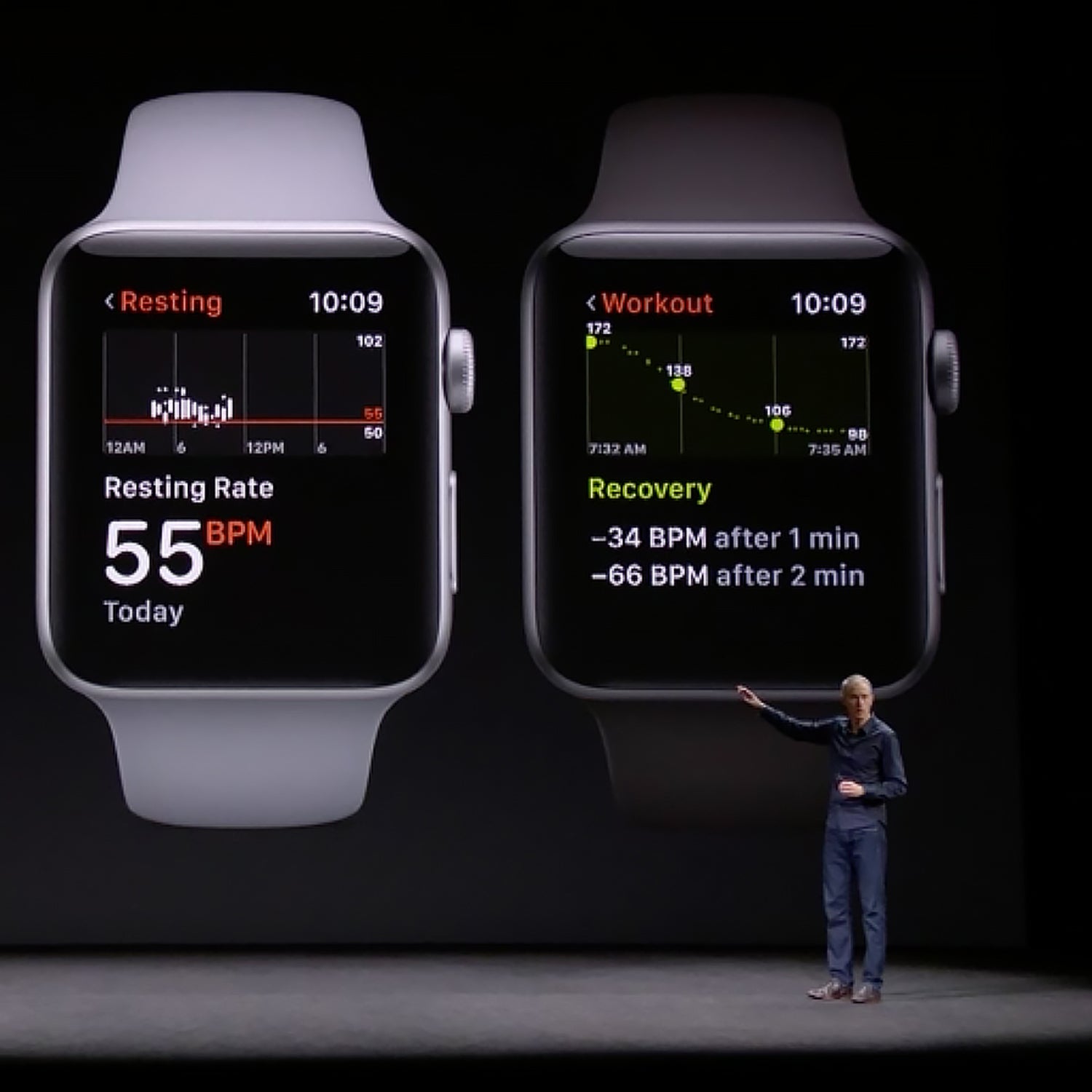When Apple CEO Tim Cook introduced the Watch in 2014, our first big question was: What is this thing? A productivity tool? A phone replacement? A fad? We gave it our Gear of the Year award despite not having clear answers.
Fast forward over two years, and Apple has has clearly settled on a vision. The cellular connectivity and barometric╠řaltimeter╠řin the third iteration of the Watch coupled with the suite of fitness-centric features added in 2016 cements it as the wearable to beat in the mass-market health and wellness space. This is a monumental change for a product that was once derided as too complicated and .╠ř
The fitness devices we test are typically designed for one of three audiences: people interested in getting a little more exercise (the step-counting crowd), consumers who dabble with data (they maybe use Strava but donÔÇÖt export activities), and serious athletes who depend on tech tools to perform at a high level (SRM power meter owners, we're talking about you). The first edition of the Watch did a really good job catering to the first group. It could prod you to move more and sit less. , which is no small feat. But it lacked GPS and some of the specific measurement abilitiesÔÇösay, power output for cyclistsÔÇöthat ambitious competitors require.
Some of that changed in 2016 with the introduction of GPS in the Apple Watch 2, . Easy to use and attractive, it performed as well as most activity monitors on the market. But the watch still had major shortcomings: it didnÔÇÖt measure elevation gain for outdoor workouts and restricted access to your workout data.
The newest Watch will soon╠řstart winning over serious athletes. While it╠řlacks the╠řlong-rumored glucose-monitoring abilities, watchOS4 packs╠řa handful╠řof crucial software updates for the fitness-minded: automatic resting heart rate measuring and recovery heart rate tracking.╠řThese two features are true game-changers for athletes looking to modify their training in real-time. Notice your resting heart rate rising or that╠řit's taking longer for your heart rate to recover to rest post-run? You now have the information to update your training on the fly.╠řApple is also launching a heart study with Stanford Medicine to help users potentially spot╠řatrial fibrillation, a surprisingly common condition in athletes. (The Watch will also now update users when their heart rate is elevated when not exercising. This could be crucial for spotting emerging health issues.) These updates come on top of a rebuilt Workout app that features high-intensity interval tracking.
The biggest open question marks for endurance athletes about the new Watch are battery and data sharing. On longer ridesÔÇöover five hoursÔÇöor when I forget to bring an external battery pack while╠řcamping and hiking, my generation one╠řWatch will often die. Most athletes aren't training for ultra-length events, but taking even a half-day hike on a partially charged Watch can kill the battery. Sure, you could turn off the heart-rate monitor to conserve battery, but you're going to want that data. (Another option is to wear a chest heart-rate strap instead of using the watchÔÇÖs monitor, but most hikers I know aren't exactly dying to do that.) If Apple has figured out how to substantially lengthen the Watch's run-time, or if LTE has the opposite effect, its utility will be unfortunately limited for many endurance athletes. (For now, Apple claims 18-hour battery life in real-world conditions.)
Then thereÔÇÖs the data. While most GPS fitness trackers allow you to export your data to╠řthird-parties,╠řApple has resisted opening up the WatchÔÇÖs Workout app.╠řStart a ride in Workout, and you wonÔÇÖt be able to export╠řthat data to Strava. (Strava can however record data directly.) For the average user or even casual athlete, thatÔÇÖs not a huge problem. But for anyone serious about training, itÔÇÖs a major drawback. Use the Workout app and your data is walled offÔÇö. That said, Apple seemed to tease╠řnew data access for skiing and snowboarding apps. Let's hope it's a first step toward more data sharing.
That said, the LTE connectivity is a game-changer for bikers and runners. It's obvious, but being able to reach someone in an emergency could save your life. As a cyclist, I usually ride with my phone and bring along a SPOT emergency transmitter on more remote routes (hey, I live in New Mexico). Despite knowing how to fix pretty much anything on my bike that could break, I end up calling a friend or my girlfriend for an evac at least once a year. But many runners don't run with their phones. Holding onto one for 20-mile training runs isn't all that pleasant. If you're a runner who'd like some peace of mind, a cyclist who wants to leave the phone at home but still be able to call for help, or want to stream music while you're training without your watch, LTE makes a real difference.
The new Watch isn't for everyone. It costs $399 (with cellular connectivity). And in many instances, even for athletes, a smartphone or sport-specific watch is a suitable if less convenient alternative. But itÔÇÖs a far more capable and appealing fitness tool than╠řthe first two editions. In many ways, itÔÇÖs the realization of the original promise of the device: a wearable that youÔÇÖll want to wear all day long. For the majority of us, itÔÇÖs the only sport watch youÔÇÖll ever need.


